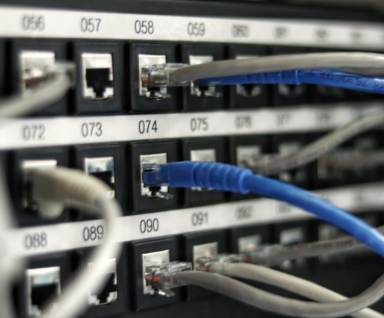EDR vs. Antivirus, what’s Worth Paying For in 2025

Modern Attacks Have Outgrown Traditional Antivirus
Ten years ago, a signature-based antivirus was enough to keep small business endpoints safe. Today, that’s no longer true. Modern threats use fileless malware, credential theft, and living-off-the-land techniques that don’t rely on static signatures at all. By the time a traditional antivirus recognizes the pattern, the attacker has already moved laterally across the network. For SMBs in Montréal, the question is no longer “Do we need security?” — but “What level of endpoint protection actually makes sense for our size and risk profile?”
Defining the Landscape: AV, NGAV, EDR, and MDR/XDR
Before comparing costs, it’s important to understand the terminology:
| Term | Description | Typical Use Case |
|---|---|---|
| Antivirus (AV) | Signature-based scanning for known malware. | Basic protection for small offices with limited risk exposure. |
| Next-Gen Antivirus (NGAV) | Uses behavioral and AI models to detect new or unknown threats. | Step up from AV, minimal configuration needed. |
| Endpoint Detection & Response (EDR) | Adds real-time monitoring, investigation tools, and containment actions. | For organizations that need visibility and control. |
| Managed Detection & Response (MDR/XDR) | EDR backed by a 24/7 security team analyzing alerts and taking action. | Ideal for SMBs without in-house security expertise. |
Feature Comparison: Detection, Containment, and Response
| Feature | Traditional AV | EDR / MDR |
|---|---|---|
| Threat Detection | Signature-based; known malware only | Behavioral + AI; detects unknown attacks |
| Response | Quarantine infected files | Isolate endpoints, kill malicious processes, rollback changes |
| Visibility | Limited | Full endpoint activity timeline |
| Integration | Standalone | Integrated with SIEM, SOC, and cloud platforms |
| Reporting | Basic logs | Actionable analytics and incident reports |
| Traditional antivirus reacts after an infection is identified. EDR systems, on the other hand, detect, contain, and respond to suspicious activity — before business operations are disrupted. |
Staffing Reality for SMBs
For most SMBs, having a dedicated SOC or cybersecurity analyst isn’t realistic. That’s why EDR platforms are often bundled with managed response services — providing enterprise-level protection without hiring a full-time team. At AET Solutions, we see SMB clients adopt EDR mainly because it outsources the monitoring and response to experts who can act on alerts 24/7, rather than leaving notifications unreviewed in a dashboard.
Cost Model: Agent + Service
While antivirus is typically a low, flat annual cost per device, EDR pricing combines two layers: (1) per-endpoint agent license (e.g., $3–$6 per month per device) and (2) managed service fee for monitoring and response (optional, but strongly recommended). The total cost for a small business with 25–50 endpoints is usually $1,500–$4,000 per year, depending on whether the service is fully managed. That’s still a fraction of the potential losses from a ransomware attack or extended downtime.
Implementation Pitfalls
Even the best EDR or AV solution can fail if deployed incorrectly. Common issues include overly broad exclusions that create blind spots, lack of alert tuning leading to alert fatigue, agents not deployed consistently across all devices, and no clear incident response playbook for follow-up actions. Partnering with an experienced Managed IT provider ensures your configuration is aligned with both security and productivity needs.
Decision Tree: When AV Is Enough — and When to Step Up
Antivirus is sufficient if: you have fewer than 10 endpoints and no remote access or shared servers; devices are used for basic email and office tasks only; you already have strong email filtering and network firewalls.
EDR is essential if: you store or process client data (financial, medical, or confidential); you use Microsoft 365, cloud drives, or hybrid environments; you allow remote work, VPN, or mobile access; or you need to meet compliance or cyber-insurance requirements. In 2025, with the rise of AI-driven phishing and zero-day exploits, EDR is quickly becoming the new baseline for endpoint protection — not a luxury.
FAQ
Is EDR the same as antivirus? No. Antivirus detects known threats; EDR detects behaviors and allows real-time response.
Can EDR replace my antivirus? Yes — most EDR solutions include NGAV capabilities, replacing legacy antivirus entirely.
Do SMBs really need 24/7 monitoring? If your staff doesn’t review alerts overnight or on weekends, then yes — managed EDR ensures continuous protection.
What’s the main cost driver? Licensing is predictable, but managed response hours and data retention often define the total annual cost.
Next Steps
Not sure which solution fits your business? AET Solutions helps Montréal SMBs evaluate endpoint security through our Cybersecurity Baseline Assessment — covering EDR readiness, policy compliance, and ROI comparisons.
Book your assessment today: https://aetsolutions.ca/cybersecurity